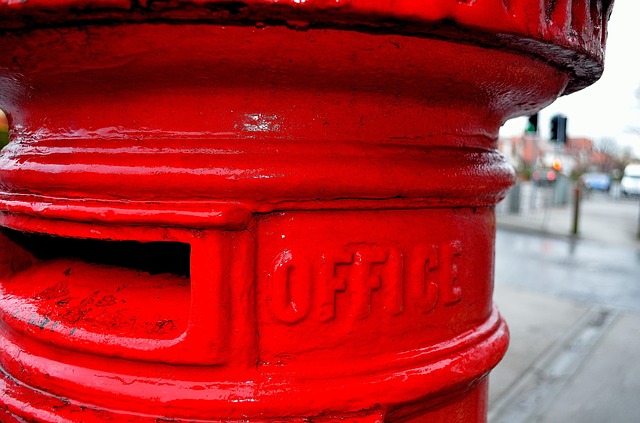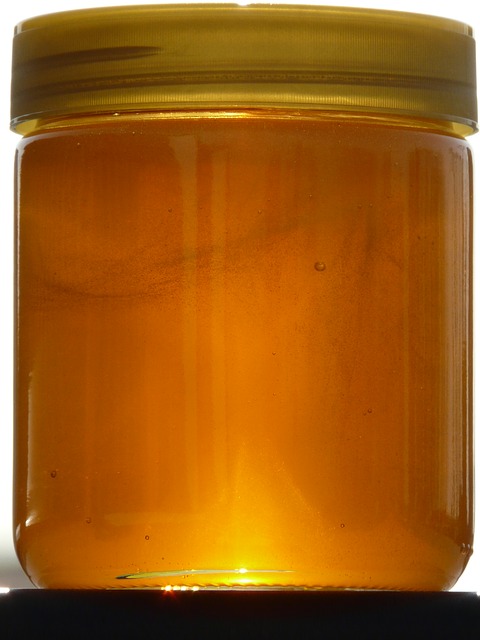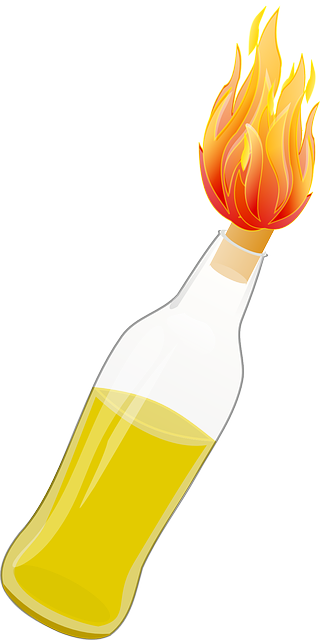قسطرة الشريان التاجي
قسطرة الشرايين التاجية coronary catheterization، هي جراحة طفيفة التوغل للوصول إلى الدورة التاجية وحجرات القلب المملتئة بالدم باستخدام القسطرة.
is a minimally invasive procedure to access the coronary circulation and blood filled chambers of the heart using a catheter. It is performed for both diagnostic and interventional (treatment) purposes.
Coronary catheterization is one of the several cardiology diagnostic tests and procedures. Specifically, coronary catheterization is a visually interpreted test performed to recognize occlusion, stenosis, restenosis, thrombosis or aneurysmal enlargement of the coronary artery lumens; heart chamber size; heart muscle contraction performance; and some aspects of heart valve function. Important internal heart and lung blood pressures, not measurable from outside the body, can be accurately measured during the test. The relevant problems that the test deals with most commonly occur as a result of advanced atherosclerosis -- atheroma activity within the wall of the coronary arteries. Less frequently, valvular, heart muscle, or arrhythmia issues are the primary focus of the test.
Coronary artery luminal narrowing reduces the flow reserve for oxygenated blood to the heart, typically producing intermittent angina. Very advanced luminal occlusion usually produces a heart attack. However, it has been increasingly recognized, since the late 1980s, that coronary catheterization does not allow the recognition of the presence or absence of coronary atherosclerosis itself, only significant luminal changes which have occurred as a result of end stage complications of the atherosclerotic process. See IVUS and atheroma for a better understanding of this issue.
التاريخ
The technique of angiography was first developed in 1927 by the Portuguese physician Egas Moniz to provide contrasted x-ray in order to diagnose nervous diseases, such as tumors, coronary heart disease and arteriovenous malformations. He is recognized as one of the pioneers in this field.
Coronary catheterization was further explored in 1929 when the German physician Werner Forssmann inserted a plastic tube in his cubital vein and guided it to the right chamber of the heart. He took an x-ray to prove his success and published it on Novemberخمسة 1929 with the title "Über die Sondierung des rechten Herzens" (About probing of the right heart). The coronarography of the left heart was introduced in 1953 with the report by a Portuguese group, published in Cardiologia, International Archives of Cardiology volume 22, pages 45-61, by E. Coelho et al., entitled L'artériograpie des coronaires chez l'homme vivant. They were the first to inject radiocontrast in the coronary arteries. In 1954 George C. Willis injected the coronary arteries with contrast medium in order to monitor the reversal of coronary artery disease after proving to his own satisfaction, that Guinea pigs suffered from the same scurvy related coronary atherosclerosis as humans lacking vitamin C. He successfully demonstrated reversal of coronary artery disease or its arrestation in 70% of his sample in the St. Anne's and Queen Mary VA hospitals of Montreal. His paper "Serial arteriography in atherosclerosis" (G.C. Willis, A.W. Light, W.S. Cow. Canadian Med. Assn. J. Dec. 1954. Vol 71 Pp. 562-568) is the definitive first report of success in reversing the human disease with vitamin C rendering the later development of the coronary bypass unnecessary. In 1960 F. Mason Sones, a pediatric cardiologist at the Cleveland Clinic, accidentally injected radiocontrast in a coronary artery instead of the left ventricle. Although the patient had a reversible cardiac arrest, Sones and Shirey developed the procedure further, and are credited with the discovery (Connolly 2002); they published a series of 1,000 patents in 1966 (Proudfit et al.).
Since the late 1970s, building on the pioneering work of Charles Dotter in 1964 and especially Andreas Gruentzig starting in 1977, coronary catheterization has been extended to therapeutic uses: (a) the performance of less invasive physical treatment for angina and some of the complications of severe atherosclerosis, (b) treating heart attacks before complete damage has occurred and (c) research for better understanding of the pathology of coronary artery disease and atherosclerosis. Today, and more ethically utilising the definitive work of Michelson, Morganroth, Nichols and MacVaugh (Arch Intern Med. 1979 Oct;139(10):1139-41) who established the closest possible relationship between coronary and retinal atherosclerosis, it might be judged more prudent to determine, using the fundus CardioRetinometry of Bush, whether or not and how quickly arterial disease can be reversed, before embarking on cardio-thoracic surgery.
مشاركة السقمى
The patient being examined or treated is usually awake during coronary catheterization, ideally with only local anaesthesia such as lidocaine and minimal general sedation, throughout the procedure. Performing the procedure with the patient awake is safer as the patient can immediately report any discomfort or problems and thereby facilitate rapid correction of any undesirable events. Medical monitors fail to give a comprehensive view of the patient's immediate well-being; how the patient feels is often a most reliable indicator of procedural safety.
In the early 1960s, cardiac catheterization frequently took several hours and involved significant complications for as many as 2–3% of patients. With multiple incremental improvements over time, simple coronary catheterization examinations are now commonly done more rapidly and with significantly improved outcomes. Death, myocardial infarction, stroke, serious ventricular arrhythmia, and major vascular complications each occur in less than 1% of patients undergoing catheterization. However, though the imaging portion of the examination is often brief, because of setup and safety issues the patient is often in the lab for 20–45 minutes. Any of multiple technical difficulties, while not endangering the patient (indeed added to protect the patient's interests) can significantly increase the examination time.
الأجهزة
Coronary catheterization is performed in a cardiac catheterization lab, usually located within a hospital. With current designs, the patient must lay relatively flat on a narrow, minimally padded, radiolucent (transparent to X-ray) table. The X-Ray source and imaging camera equipment are on opposite sides of the patient's chest and freely move, under motorized control, around the patient's chest so images can be taken quickly from multiple angles. More advanced equipment, termed a bi-plane cath lab, uses two sets of X-Ray source and imaging cameras, each free to move independently, which allows two sets of images to be taken with each injection of radiocontrast agent.
The equipment and installation setup to perform such testing typically represents a capital expenditure of US$2–5 million (2004), sometimes more, partially repeated every few years.
اجراءات التشخيص
During coronary catheterization (often referred to as a cath by physicians), blood pressures are recorded and X-Ray motion picture shadow-grams of the blood inside the coronary arteries are recorded. In order to create the X-ray pictures, a physician guides a small tube-like device called a catheter, typically ~2.0 mm (6-French) in diameter, through the large arteries of the body until the tip is just within the opening of one of the coronary arteries. By design, the catheter is smaller than the lumen of the artery it is placed in; internal/intraarterial blood pressures are monitored through the catheter to verify that the catheter does not block blood flow.
The catheter is itself designed to be radiodense for visibility and it allows a clear, watery, blood compatible radiocontrast agent, commonly called an X-ray dye, to be selectively injected and mixed with the blood flowing within the artery. Typically 3–8 cc of the radiocontrast agent is injected for each image to make the blood flow visible for about 3–5 seconds as the radiocontrast agent is rapidly washed away into the coronary capillaries and then coronary veins. Without the X-ray dye injection, the blood and surrounding heart tissues appear, on X-ray, as only a mildly-shape-changing, otherwise uniform water density mass; no details of the blood and internal organ structure are discernible. The radiocontrast within the blood allows visualization of the blood flow within the arteries or heart chambers, depending on where it is injected.
If atheroma, or clots, are protruding into the lumen, producing narrowing, the narrowing may be seen instead as increased haziness within the X-ray shadow images of the blood/dye column within that portion of the artery; this is as compared to adjacent, presumed healthier, less stenotic areas. See the single frame illustration of an coronary angiogram image on the angioplasty page.
For guidance regarding catheter positions during the examination, the physician mostly relies on detailed knowledge of internal anatomy, guide wire and catheter behavior and intermittently, briefly uses fluoroscopy and a low X-ray dose to visualize when needed. This is done without saving recordings of these brief looks. When the physician is ready to record diagnostic views, which are saved and can be more carefully scrutinized later, he activates the equipment to apply a significantly higher X-ray dose, termed cine, in order to create better quality motion picture images, having sharper radiodensity contrast, typically at 30 frames per second. The physician controls both the contrast injection, fluoroscopy and cine application timing so as to minimize the total amount of radiocontrast injected and times the X-Ray to the injection so as to minimize the total amount of X-ray used. Doses of radiocontrast agents and X-ray exposure times are routinely recorded in an effort to maximize safety.
Though not the focus of the test, calcification within the artery walls, located in the outer edges of atheroma within the artery walls, is sometimes recognizable on fluoroscopy (without contrast injection) as radiodense halo rings partially encircling, and separated from the blood filled lumen by the interceding radiolucent atheroma tissue and endothelial lining. Calcification, even though usually present, is usually only visible when quite advanced and calcified sections of the artery wall happen to be viewed on end tangentially through multiple rings of calcification, so as to create enough radiodensity to be visible on fluoroscopy.
الاجراءات العلاجية
By changing the diagnostic catheter to a guiding catheter, physicians can also pass a variety of instruments through the catheter and into the artery to a lesion site. The most commonly used are 0.014 inch diameter guide wires and the balloon dilation catheters.
By injecting radiocontrast agent through a tiny passage extending down the balloon catheter and into the balloon, the balloon is progressively expanded. The hydraulic pressures are chosen and applied by the physician, according to how the balloon within the stenosis responds. The radiocontrast filled balloon is watched under fluoroscopy (it typically assumes a "dog bone" shape imposed on the outside of the balloon by the stenosis as the balloon is expanded), as it opens. As much hydraulic brute force is applied as judged needed and visualized to be effective to make the stenosis of the artery lumen visibly enlarge.
Typical normal coronary artery pressures are in the <200 mmHg range (27 kPa). The hydraulic pressures applied within the balloon may extend to as high as 19000 mmHg (2,500 kPa). Prevention of over-enlargement is achieved by choosing balloons manufactured out of high tensile strength clear plastic membranes. The balloon is initially folded around the catheter, near the tip, to create a small cross-sectional profile to facilitate passage though luminal stenotic areas and designed to inflate to a specific pre-designed diameter. If over inflated, the balloon material simply tears and allows the inflating radiocontrast agent to simply escape into the blood.
Additionally, several other devices can be advanced into the artery via a guiding catheter. These include laser catheters, stent catheters, IVUS catheters, Doppler catheter, pressure or temperature measurement catheter and various clot and grinding or removal devices. Most of these devices have turned out to be niche devices, only useful in a small percentage of situations or for research.
Stents, which are specially manufactured expandable stainless steel mesh tubes, mounted on a balloon catheter, are the most commonly used device beyond the balloon catheter. When the stent/balloon device positioned within the stenosis, the balloon is inflated which, in turn, expands the stent and the artery. The balloon is removed and the stent remains in place, supporting the inner artery walls in the more open, dilated position. Current stents generally cost around $1,000 to 3,000 each (US 2004 dollars), the drug coated ones being the more expensive.
تطور القسطرة بالإعتماد على العلاج البدني
Interventional procedures have been plagued by restenosis due to the formation of endothelial tissue overgrowth at the lesion site. Restenosis is the body's response to the injury of the vessel wall from angioplasty and to the stent as a foreign body. As assessed in clinical trials during the late 1980 and 1990s, using only balloon angioplasty (POBA, plain old balloon angioplasty), up to 50% of patients suffered significant restenosis but that percentage has dropped to the single to lower two digit range with the introduction of drug-eluting stents. Sirolimus, paclitaxel and everolimus are the three drugs used in coatings which are currently FDA approved in the United States. As opposed to bare metal, drug eluting stents are covered with a medicine that is slowly dispersed with the goal of suppressing the restenosis reaction. The key to the success of drug coating has been (a) choosing effective agents, (b) developing ways of adequately binding the drugs to the stainless surface of the stent struts (the coating must stay bound despite marked handling and stent deformation stresses) and (c) developing coating controlled release mechanisms that release the drug slowly over about 30 days.
انظر أيضا
- Angiography
- Interventional cardiology
- Fractional flow reserve
المصادر
الهوامش
- ^ Hurst, J. Willis; Fuster, Valentin; O'Rourke, Robert A. (2004). . New York: McGraw-Hill, Medical Publishing Division. pp. 489–90. ISBN .CS1 maint: multiple names: authors list (link)
عام
- Connolly JE. The development of coronary artery surgery: personal recollections. Tex Heart Inst J 2002;29:10-4. PMID 11995842.
- Proudfit WL, Shirey EK, Sones FM Jr. Selective cine coronary arteriography. Correlation with clinical findings in 1,000 patients. Circulation 1966;33:901-10. PMID 5942973.
- Sones FM, Shirey EK. Cine coronary arteriography. Mod Concepts Cardiovasc Dis 1962;31:735-8. PMID 13915182.
- [1] Coronary CT angiography by Eugene Lin
















